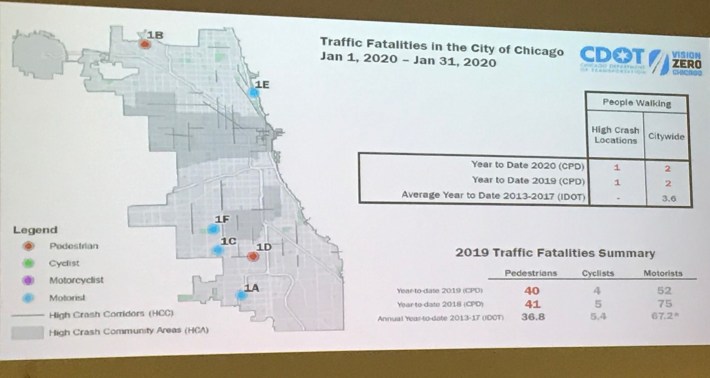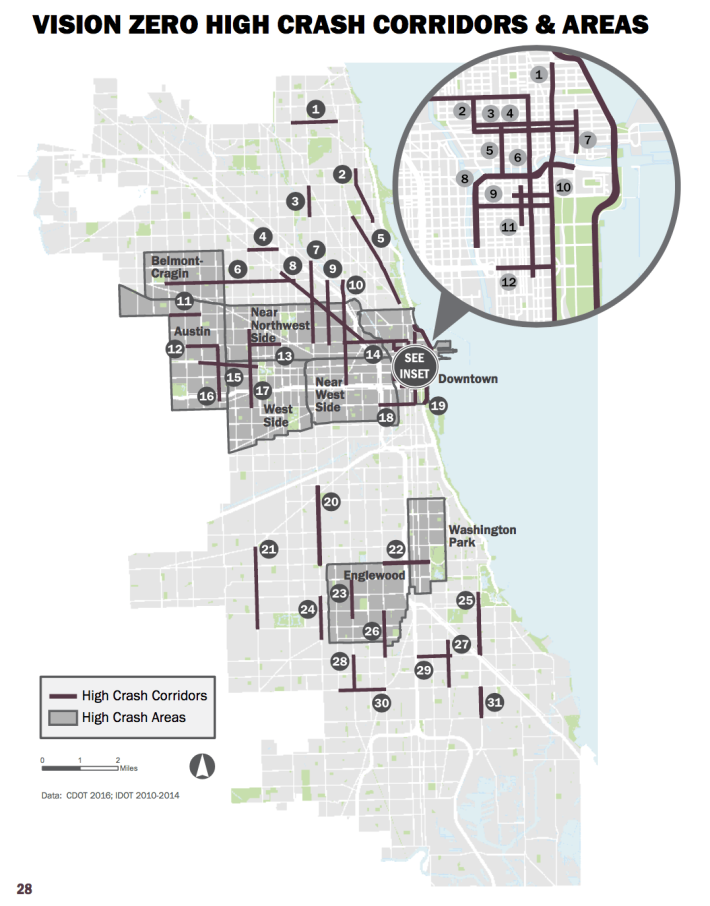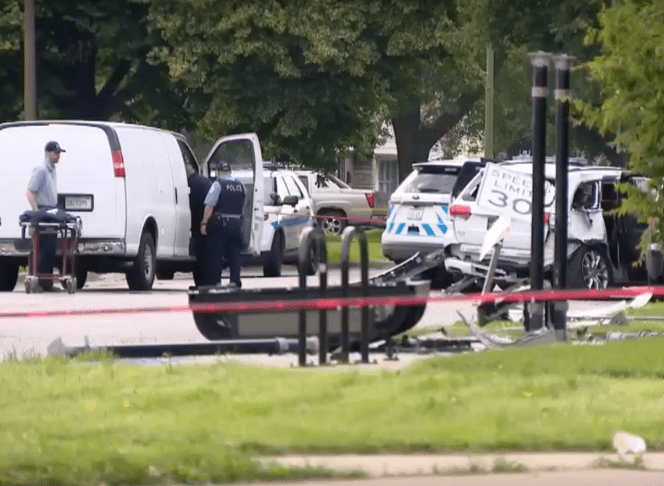There was a major improvement in the overall number of traffic fatalities on Chicago streets last year, but there was almost no improvement in the number of pedestrian deaths.
"In 2019 we saw a really large reduction in the number of fatalities... a 20 percent reduction compared to 2018, and that's a really good thing," said David Smith, the Chicago Department of Transportation's bicycle and pedestrian program manager, at today's Mayor's Pedestrian Advisory Council meeting. The total number of traffic deaths last year was 96, down from 121 fatalities in 2018.

However, a decrease in motorists deaths, from 75 in 2018 to 52 in 2019, accounted for almost all of the total drop. Pedestrian fatalities only decreased from 41 in 2018 to 40 in 2019. "We need to see that number go down," Smith said. (There were five bike deaths in 2018 and four cycling fatalities in 2019.)
During most of 2019 pedestrian fatalities were trending below previous years, but in the months of July and August there were 13 pedestrians killed, "which is by far higher than what we would typically see," Smith said. Five of of those 13 were killed outside of vehicle traffic, including four people waiting at bus stops, and one man who was struck in an alley. "That really highlight how much work we have to do."
In 2019 about 55 percent of people walking were either on high-crash corridors or in high-crash community areas, as identified in Chicago's Vision Zero plan, Smith said. "That really highlights the need to invest in the Vision Zero program and continue to do more with connecting with communities."

Almost 70 percent of the 35 pedestrians who were killed in traffic were hit by the driver of an SUV or a large vehicle, Smith said. Close to 40 percent of the fatalities were hit-and-run cases.
Over 62 percent of the drivers who killed pedestrians were 40 years old or younger, and about 55 percent of the victims were over the age of fifty, according to Smith. "So [we need] to design our streets for the most vulnerable road users and... focus education efforts on younger, new drivers."
About a third of the people who were killed while walking were in a marked crosswalk, Smith said. "That doesn't mean that the other two-thirds were doing anything wrong, it just means that they were crossing in an unmarked crosswalk or were on the sidewalk or in an alley."
About 70 percentage of the fatal pedestrian crashes included at least one of the five dangerous driving behaviors in the Vision Zero Action Plan, including speeding, running a red light, failing to yield to a pedestrian in a crosswalk, driving while intoxicated, or driving while distracted, Smith said.
So far in 2020 there have been three on-street Chicago pedestrian fatality cases, Smith said. On January 13 Maximo R. Portuondo, 51, was struck and killed while walking in the roadway on a stretch of Devon Street by the Caldwell Woods forest preserve that lacks sidewalks. On February 1, a driver fatally struck Mohamed Salah Ali, 29, as he attempted to cross Lake Shore Drive by the Museum Campus at a signalized surface intersection with no sidewalks or crosswalks, where signs ban pedestrian access. The third fatality took place in January near 87th and Halsted street, Smith said, but he did provide additional info about the case, and it was not reported by local media outlets.






